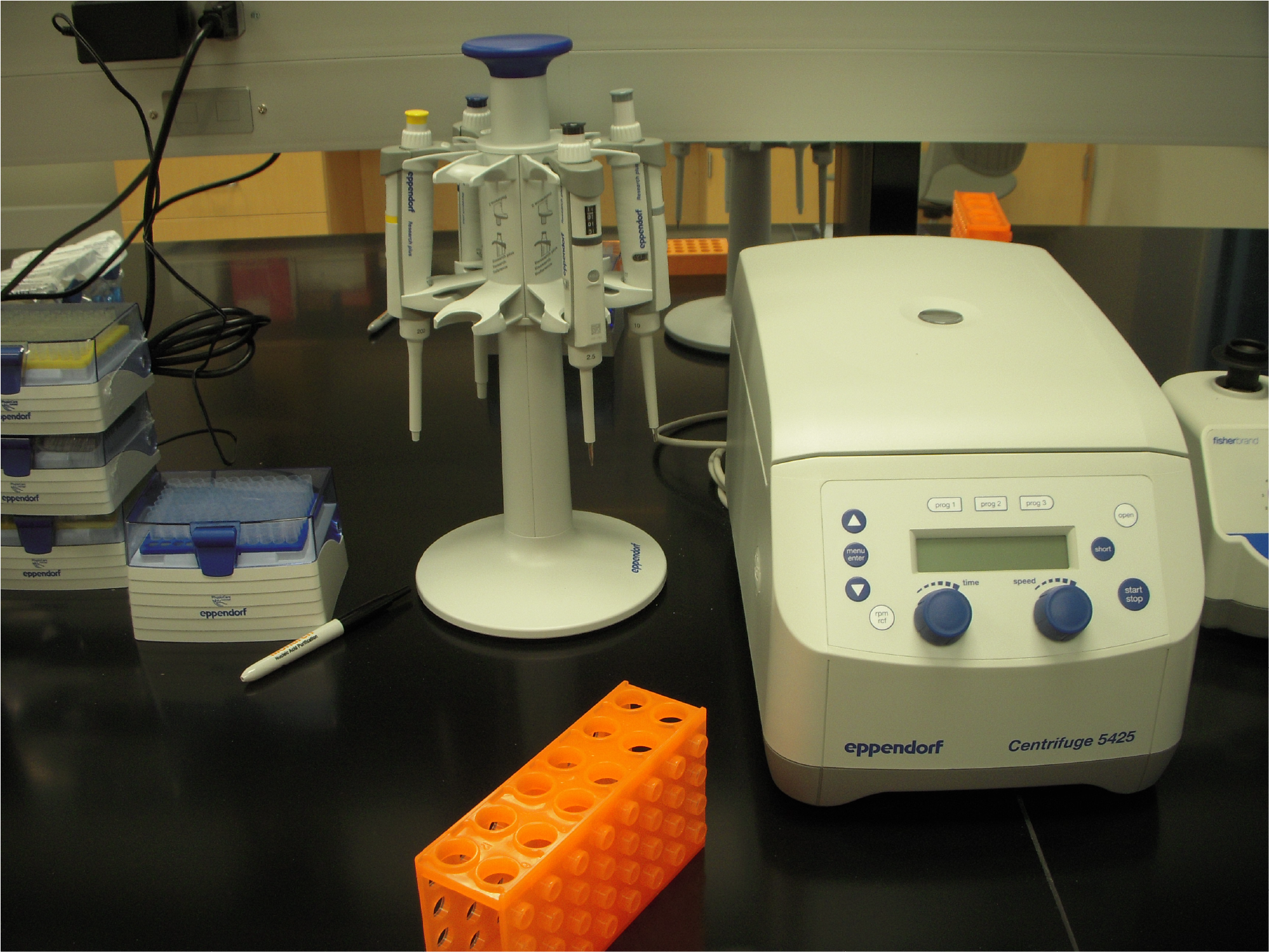We attended the 2024 RNA Society Meeting in Edinburgh and had a great time talking about RNA biology and meeting people. Austin Herbert, Allie Randazza and Debarati Majumdar presented posters on their graduate research projects. Congratulations to Debarati for receiving an RNA Society Travel Award!

Lackey lab in at the closing dinner in the National Museum of Scotland.
Posters
Exploring alternative polyadenylation isoforms of DNMT3A
Debarati Majumdar, Austin Herbert, Lela Lackey
The DNMT3A (DNA methyl transferase) gene is known for its pivotal role in de novo DNA methylation and gene regulation. DNMT3A’s role in DNA methylation is well‐documented. However, DNMT3A produces various mRNA isoforms through alternative polyadenylation (APA) and alternative splicing. Each of these mRNA isoforms may be regulated differently in ways that could significantly impact the origins and progression of various DNMT3A‐associated conditions, such as acute myeloid leukemia (AML) and neurodevelopmental disorders. Our hypothesis is that specific mRNA isoforms of DNMT3A, resulting from alternative polyadenylation (APA) events, may display variable stability, unique subcellular localizations, and differential impacts on downstream gene expression, ultimately influencing the pathogenesis of disorders. As a preliminary dataset, we used GTEx, 1000 genomes and UCSC Genome browser to identify mRNA isoforms and check their levels in various tissues. Once we confirmed DNMT3A mRNA isoform variants, we constructed plasmids containing the 3’UTR of the DNMT3A gene linked to the nano luciferase reporter gene to quantitatively assess the 3’UTR’s effect on gene expression by monitoring nanoluciferase activity. Subsequently we will employ various molecular biology assays to investigate RNA stability including (Actinomycin D inhibition followed by qPCR) RNA localization (Fluorescence In Situ Hybridization; Cellular fractionation followed by qPCR) and translational efficiency (Polysome profiling) of these isoforms. Understanding the distinct roles of DNMT3A mRNA isoforms will not only advance our knowledge of the regulatory mechanisms underlying epigenetic control, but also lay the groundwork for isoform‐specific therapeutic interventions in DNMT3A‐associated diseases.
High‐throughput workflow to study the impact of mutations on RNA structure in the adenine riboswitch
Alexandra Randazza, FNU Jiamutai, Vijay Shankar, Lela Lackey
Directly linking individual RNA structures with function is difficult. We aim to create a workflow to determine the impact of specific RNA structures on RNA function. To do so, we incorporate mutations at specific positions in an RNA construct to alter individual structural elements and analyze the impact of altering those structures on function. We are developing a high‐throughput method to analyze hundreds to thousands of variants at once. For our initial tests, we are using the adenine riboswitch. The bacterial adenine riboswitch alters its structure upon binding adenine to facilitate the initiation of translation of an adenine deaminase protein. Purely computational structure analysis of mutant adenine riboswitch was unable to detect restoration of structure with rescue mutations. Our initial tests included six sequence variants that are expected to either destroy or maintain the aptamer’s structure. The ability of these variants to respond to adenine was first analyzed individually. In the future, we will pool them together. We have created a computational pipeline to separate each variant in the pool and generate structural data to measure the impact of the sequence variation on structure. We plan to expand this method to larger pools of mutants. To link mutations and structural changes to function, we will quantify the appropriate response of the adenine riboswitch to adenine. This will allow us to highlight structures that are essential in the adenine riboswitch and use this method to understand the role of RNA structure in other systems.
Precursor RNA structural patterns at SF3B1 mutation sensitive cryptic 3’ splice sites
Austin Herbert, Abigail Hatfield, Alexandra Randazza, Valeria Miyamoto, Katie Palmer, Lela Lackey
SF3B1, a core component of the spliceosome involved in branch point recognition and 3’ splice site selection is frequently mutated in human hematopoietic malignancies. Mice and zebra fish with conditional SF3B1 knock‐in mutations develop macrocytic anemia. A hallmark of SF3B1 mutation is an increased use of upstream cryptic 3’ splice sites (C3SS) in a broad number of genes, a finding that is recapitulated across multiple isogenic and patient cell types. Current studies suggest the common SF3B1 K700E mutation results in gain of function, allowing mutant SF3B1 spliceosomes to recognize cryptic 3’ splice sites normally inaccessible to the wild‐type protein. We asked whether precursor RNAs with SF3B1 K700E sensitive splice sites are structurally different from control cryptic 3’ splice sites. Utilizing publicly available bulk RNA sequencing data, we define a core set of 73 cryptic 3’ splice sites shared between isogenic SF3B1 K700E and myelodysplastic syndrome patient cell lines. Through a combination of experimental and in‐silico methods, we assess precursor RNA secondary structure in this subset of 3’ splice sites sensitive to cryptic mis‐splicing in SF3B1 mutant backgrounds. Occurring at a mean distance of 28 base pairs upstream, SF3B1 sensitive C3SS are significantly closer to their paired canonical splice sites than what is observed among control C3SS (mean 78 bp). Both SF3B1 sensitive and control C3SS contain a distinct polypyrimidine tract and a strong consensus AG splice site motif. Experimentally based structure models of intron‐exon junctions around SF3B1 sensitive C3SS reveals that cryptic sites structurally mimic their canonical counterparts. Despite structural mimicry at the immediate splice sites, cryptic 3’ splice sites lack downstream structural signatures observed in the exons of their paired canonical splice sites. We anticipate that SF3B1 mutation sensitive C3SS contain distinct structural patterns compared to control C3SS. These observations will yield insights on the modulation of cryptic 3’ splice site choice by precursor RNA secondary structures susceptible to mis‐splicing in SF3B1 mutants. Finally, we will use these findings to investigate a generalized mechanistic role of precursor RNA structures in contributing to regulation of cryptic 3’ splicing.



